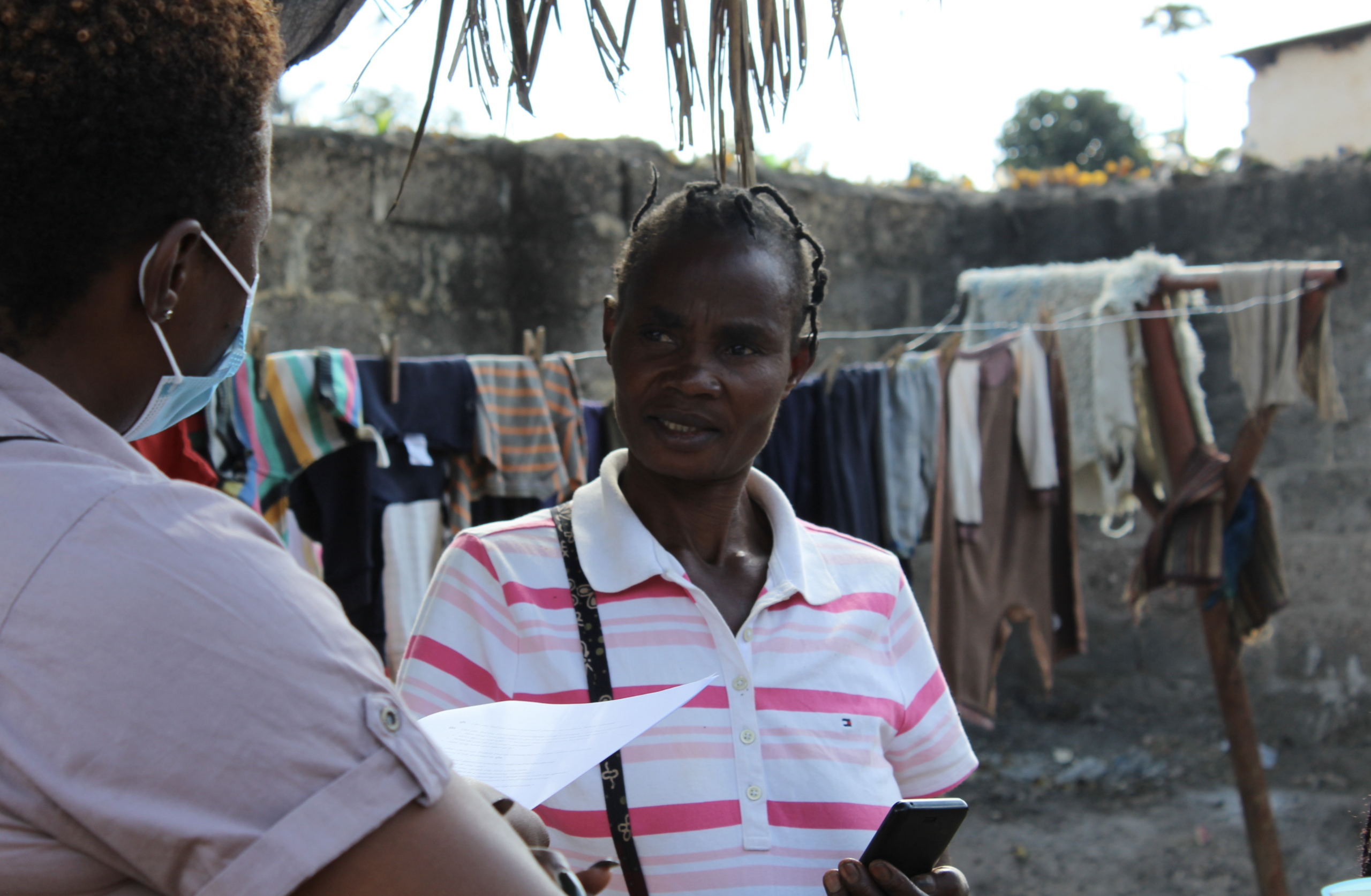UNCDF strengthens digital literacy to increase participation in the digital economy
Author:
Mali Kambandu-Nkhoma
Knowledge Management Analyst malingose.kambandu@uncdf.org
Dominic Adongo
Digital Economies Expert
dominic.adongo@uncdf.org
Tags

“With cash, I know who is getting the money,” said 44-year-old housewife in Lusaka province who chose to remain anonymous, “but if I use the phone, I worry that the money will be stolen.”
The United Nations Capital Development Fund (UNCDF) partnered with the Zambia Ministry of Finance to digitalize utility payments and drive digital and financial inclusion for Zambia’s underserved customers. One aim of this partnership was to increase the availability and usage of utilities for women and youth.
And to ensure customers can use these digital services, they must be knowledgeable of the services offered and how to use them for their energy, water and sanitation payments.
To assist customers to know about these services and use them confidently, UNCDF is collaborating with Viamo, a tech startup and platform company specializing in developing markets. The project centres on awareness and training in digital financial literacy for utility providers and customers.
This project will be implemented in Lusaka, Kabwe and Kitwe districts with the aim to reach 30,000 customers, of which 21,000 are women and 9,000 youth.
In 2018 and 2019, digital finance providers reported efforts to continue their customer education efforts because low customer education, low customer literacy and low levels of trust in digital financial services negatively impact usage of digital financial services (DFS) (State of the Digital Financial Services Market Reports 2018 and 2019). Providers use methods such as direct marketing for customer onboarding to drive the growth of active DFS customers. However, with a 39 percent customer activity rate reported in 2019, there is still some improvement to be made to increase the usage of digital finance products and services.
By supporting this project, UNCDF is placing emphasis on customer education as a critical component in building a digital economy and as Zambia undergoes digital transformation.
Viamo will design and launch digital financial literacy campaigns and training for the following innovative digital payment solutions:
- making digital payments via a translated USSD mobile money application in four major Zambian languages of Bemba, Lozi, and Tonga for two energy, two water, and sanitation service providers and their customers
- making digital payments for water via water kiosks with automated water dispensing machines for three water service providers and their customers
- making digital payments for electricity for two energy service providers and their customers
The campaigns and training will be conducted using the 667 service, a free, on-demand information service available on mobile phones via Interactive Voice Response (IVR) and a Whatsapp chatbot for those who have smartphones. To make the services more accessible to all Zambians, the 667 service is available in the four indigenous languages and each user can progress through the lessons at their own pace.
In addition to direct customer education, Viamo and UNCDF aim to reach customers in their communities and will train booster teams and the utility providers’ in-house community outreach teams in customer education to boost their activities and ensure the sustainability of this knowledge. Booster teams will be mobilised in peri-urban and rural areas to inform customers of the new and existing digital payment options and sign up new customers onto mobile money, with their preferred provider.
This will ensure customers in even remote areas have an opportunity to be reached with DFS and are then able to pay for their utilities, and consequently, no-one in Zambia is left behind as the country rapidly begins its digital transformation.
Remarks from Mubanga Chilufya, Viamo Country Manager, Zambia: “Viamo is a firm supporter of the vision of the Government of the Republic of Zambia's National Financial Inclusion Strategy. The vision of the strategy is to “achieve universal access and usage of a broad range of quality and affordable financial services that meet the needs of both individuals and enterprises.''
Achieving this vision has remained a challenge for Zambia due to key issues like low levels of financial literacy, lack of awareness about formal financial products available on the market. Women and youth have also been largely excluded from the formal financial system. In this regard, Viamo is keen to use its mobile technology solutions for information dissemination and behaviour change communication on this project. Viamo uses mobile because of the high penetration of this channel which is comparable to none. The information will be multilingual, in line with Zambia's language diversity and will be a combination of text and voice, to cater for varying literacy levels. Viamo already reaches over 500,000 Zambians annually using mobile technology.”
Remarks from Isaac Holly Ogwal, UNCDF Country Lead: “Digital payments for utilities will be a critical enabler for many rural people for digital services, and this is essential for them to participate in Zambia’s growing digital economy. Digitizing utility payments is essential in minimizing their operational cost for utility companies and provides customers with a convenient, reliable, and secure payment channel. Utility payment is a good use case of digital wallets (mobile money) hence UNCDF and various stakeholders under the digitization of utilities payment project will leverage this to increase the access and use of digital finance services in Zambia.
In the Zambia Inclusive Digital Economy Status 2022 Report Zambia’s digital divide is reported as 47 percent and the gender digital divide – the number of women not digitally connected – is reported as 37 percent. These data indicate that there is much more to be done to better reach underserved people and bring them into the digital ecosystem, thus improving their lives and economic opportunities. Initiatives such as this project can contribute to closing the digital divide by raising customers’ digital literacy.